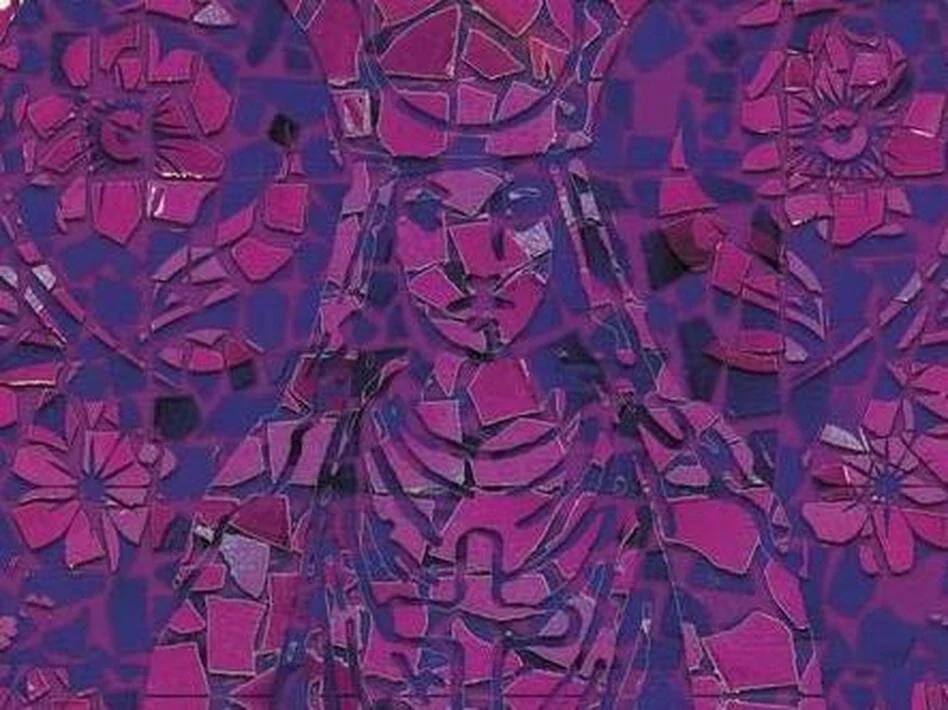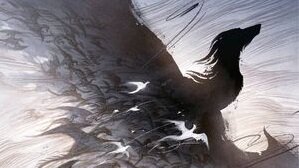Earlier this year, when rioters stormed the Capitol with a broad impulse of insurrection, it struck many how gestural it all was. Despite costing the lives of five people and injuring several dozen more, the riot on January 6, 2021 played out like a romance of revolution—with more costumes, slogans, and symbolic vandalism than any real path to achieving a political objective. And thank goodness for that, I’m sure. But it brought to mind how patchwork and starved our revolutionary imagination is: despite how heavily rebellion features in some of our most iconic sci-fi and fantasy stories, from Star Wars to Hunger Games, we’re much less interested in the details of how social movements change (or fail to change) the world.
When Cadwell Turnbull’s debut novel The Lesson came out in 2019, its interest in the ambivalence of revolution—less glory, more guts—immediately stood out. The Lesson, which won the 2020 Neukom Institute Award, tracks a murkier story of oppressors and rebels than we usually get. Aliens arrive over the U.S. Virgin Islands; they’re uninterested in colonization, but respond to the slightest perceived threat with lethal force, and quickly join the ranks of the islands’ long history of violent occupiers. And that particular Afro-Caribbean history of half-successful slave revolts and horrific reprisals informs the characters’ diverse, contradictory views about violent resistance. No matter how just the cause, it is never clear whether the outcome will justify the human toll.
Turnbull's second novel, No Gods, No Monsters (Blackstone, September 2021), the first in a planned trilogy, expands on the complexities of liberation movements as competing factions of magical beings decide the course of the “monster” social justice cause. We begin, as we are so hideously used to beginning, with recorded footage of a police shooting of an unarmed Black man. The victim’s sister, Laina, and her husband Ridley attempt to make sense of Lincoln’s broken life of trauma, addiction, and homelessness—an old story for Laina, now—brought to an end in a violent misunderstanding. But the leaked footage teaches her something new about Lincoln: he was a werewolf. Within days, a pack of werewolves is blocking freeway traffic in a protest that’s broadcast all over network news. Surely, the world will never be the same?
Well, yes and no. Whatever Lincoln’s death means, it is not the Spark of the Rebellion trope that features in so many rebellion stories. As the months go by, memories fade strangely and half the population doesn’t even believe they saw actual werewolves on the freeway, just dogs behaving strangely or some angry young people. This “Fracture,” between the ones who now understand that monsters are in the world and the ones determined to remember things differently, captures the sheer eeriness and shock of any number of times we’ve seen shared reality diverge into camps—“all the ways,” Ridley thinks, “reality can be written and unwritten before his very eyes.” If Lincoln’s shooting starts out as a somewhat blunt, iffy allegory for the police killings that gave rise to the Black Lives Matter movement, it pivots to a more profound and devastating examination of how social change fails to take hold as a matter of course—how mere exposure of injustice is not enough to counteract the concerted forces keeping things as they are. Mere exposure will radicalize some, and those some are important. But there is no easy consensus, no outrage that can’t be bothsidesed and whatabouted, no general uprising that just sort of... forms around a symbol.
Compare this to V for Vendetta, probably my favorite rebellion in cinema and likely the most corrosive on the political imagination. The climax (*spoiler? I guess?*), in which the people of London march in Guy Fawkes masks on the neo-fascist government and cheer as the Houses of Parliament are blown up, is all the more thrilling for its incoherence. It’s a fantasy of revolution: a naive faith in anger, disruption, and explosives, untethered from any constructive imagination, as characteristic of a certain kind of protester as the Guy Fawkes mask itself. Although the sequence draws on Czechoslovakia’s Velvet Revolution, it shows nothing like the hard-working network of civil movements that made that revolution possible, and bloodless. Why do tens of thousands march on the government, according to V for Vendetta? Because one man (no, not a man, a SYMBOL) inspired them to.
But after a seemingly endless stream of galvanizing moments—Trayvon Martin’s murder, the Sandy Hook shooting, the Australian wildfires—the list goes on, we all know it—that translated to, at best, a frustrating, mixed progress, this trope isn’t just simplistic, it’s downright poisonous. We need to start telling each other different stories of change, and it’s here that No Gods, No Monsters is indispensable work.
Like V for Vendetta’s original graphic novel form, No Gods, No Monsters is deeply interested in anarchism; the title itself is a play on an old anarchist slogan. But it’s an anarchism as invested in building new, just communities as in tearing down unjust structures. Don’t get me wrong: No Gods, No Monsters is a plotty, twisty, satisfying read, with a sprawling, diverse cast of magicals and a churning narrative ecosystem of monster-faction intrigue to sustain the trilogy. For every action sequence, though, there’s a march, or discourse on monster allyship, or a lovingly detailed co-op retreat meeting. There’s even an action sequence at a co-op retreat meeting! It’s not merely a quirky setting, either: it’s Turnbull’s faith that the messy, clumsy, figuring-it-all-out of a movement has its own artistic dignity. If imagination is, as Le Guin says, what starts to extract us from oppressive political structures, then every step of that extraction deserves its treatment.
Rather than train his imagination on the one cinematic moment that changes everything, Turnbull invests in the uneasy stretch of moments when a movement can go either way. That zone of ambiguity, rich with possibility and tragedy, where no one is offered the confidence of preordained victory or the absolution of certain failure, places extraordinary demands on the novel’s characters. And the novel shines in these moments. In particular, Ridley, a biracial trans man who likes solidarity commonwealths and podcasts, is a wonderful study in ordinary goodness: someone who wants to do the right thing, but isn’t any more equipped than most of us to rise to heroism. He could, it’s not guaranteed he will; this isn’t that kind of story.
Late in the novel, Turnbull returns to his short story “Other Worlds and This One” (first published in Asimov’s) and Hugh Everett’s many-worlds theory. The short version of Everett’s theory is the multiverse, the idea there are parallel universes in which our lives happened differently. But that misses the theory’s quantum poetry, a faith that the potentiality represented in the wavefunction isn’t lost, doesn’t “collapse,” but simply distributes elsewhere, somewhere equally real. There’s an almost spiritual importance, Turnbull’s story suggests, to imagining and visiting alternatives to violent tragedy—the holy work of understanding that such events, while they can’t be undone, still contained the powerfully real potential of going another way. And that means we retain, at every moment, the responsibility of choosing our best future. That’s an imaginative resistance to the trapped feeling of institutional oppression, crushing inequality, and hopelessness. Hope is a risk; hope is a courage and responsibility; hope is the hard, often mundane work of investing in each other’s agency. But that kind of hope is far better a solace and ideal than some fairy tale of off-screen revolution.
Where The Lesson has the grandeur of a tragedy, No Gods, No Monsters makes room for this more steady-eyed, honest sort of hope. Check out the first book of the trilogy when it comes out on September 7, 2021.












Cadwell Turnbull's new novel — the first in a trilogy — imagines the hard, uncertain work of a fantastical justice.